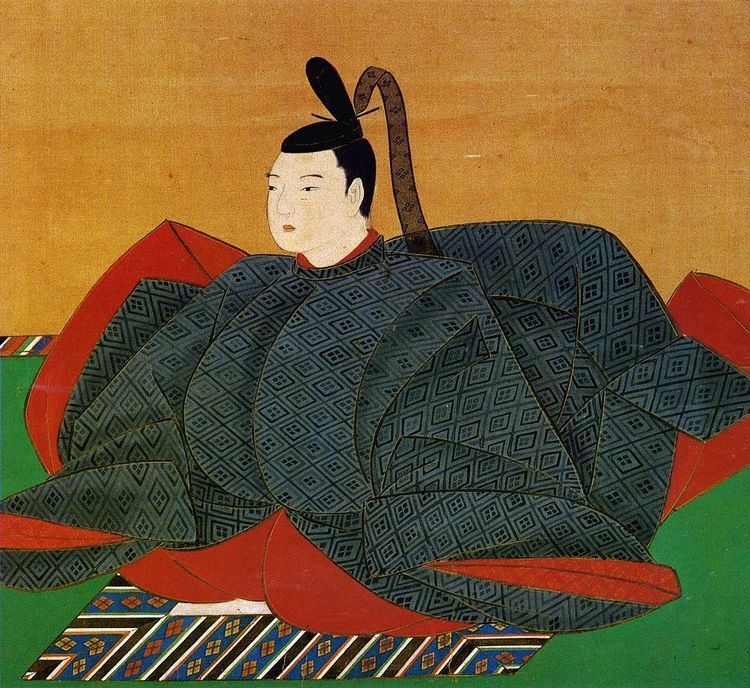Predecessor Meisho Name Emperor Go-Komyo Parents Emperor Go-Mizunoo Grandparents Emperor Go-Yozei | Role Sovereign Children Takako-naishinno | |
 | ||
Similar People Emperor Reigen, Empress Go‑Sakuramachi, Emperor Go‑Kameyama, Emperor Ninko | ||
Emperor Go-Kōmyō (後光明天皇, Go-Kōmyō-tennō, April 20, 1633 – October 30, 1654) was the 110th emperor of Japan, according to the traditional order of succession.
Contents

Go-Kōmyō's reign spanned the years from 1643 through 1654.
This 17th-century sovereign was named after the 14th-century Nanboku-chō Emperor Kōmyō and go- (後), translates as later, and thus, he could be called the "Later Emperor Kōmyō". The Japanese word go has also been translated to mean the second one, and in some older sources, this emperor may be identified as "Kōmyō, the second," or as Kōmyō II".
Genealogy
Before Go-Kōmyō's accession to the Chrysanthemum Throne, his personal name (his imina) was Tsuguhito (紹仁); and his pre-accession title was Suga-no-miya (素鵞宮).
He was the fourth son of Emperor Go-Mizunoo. His mother was Fujiwara no Mitsuko, the daughter of the Minister of the Left (Sadaijin); but he was raised as if he were the son of Tōfuku-mon'in. Empress Meishō was his elder sister by a different mother.
Go-Kōmyō's Imperial family lived with him in the Dairi of the Heian Palace. His family included only one daughter and no son:
Events of Go-Kōmyō's life
Tsuguhito-shinnō was granted the title of Crown Prince; and the following year, he became Emperor when Empress Meishō abdicated. His sister stepped down from the throne and the succession (senso) was received by the new monarch. Shortly thereafter, Emperor Go-Kōmyō is considered to have acceded to the throne (sokui). The events during his lifetime shed light on his reign. The years of Go-Kōmyō's reign correspond with a period in which Tokugawa Iemitsu and Tokugawa Ietsuna were leaders at the pinnacle of the Tokugawa shogunate.
Go-Kōmyō is among those enshrined in the imperial mausoleum, Tsuki no wa no misasagi, at Sennyū-ji in Higashiyama-ku, Kyoto. Also enshrined are Go-Kōmyō's immediate predecessors, Emperor Go-Mizunoo and Empress Meishō. Go-Kōmyō's immediate Imperial successors are also memorialized in this misasagi, including Go-Sai, Reigen, Higashiyama, Nakamikado, Sakuramachi, Momozono, Go-Sakuramachi and Go-Momozono.
Kugyō
Kugyō (公卿) is a collective term for the very few most powerful men attached to the court of the Emperor of Japan in pre-Meiji eras. Even during those years in which the court's actual influence outside the palace walls was minimal, the hierarchic organization persisted.
In general, this elite group included only three to four men at a time. These were hereditary courtiers whose experience and background would have brought them to the pinnacle of a life's career. During Go-Kōmyō's reign, this apex of the Daijō-kan included:
Eras of Go-Kōmyō's reign
The years of Go-Kōmyō's reign are more specifically identified by more than one era name or nengō.
